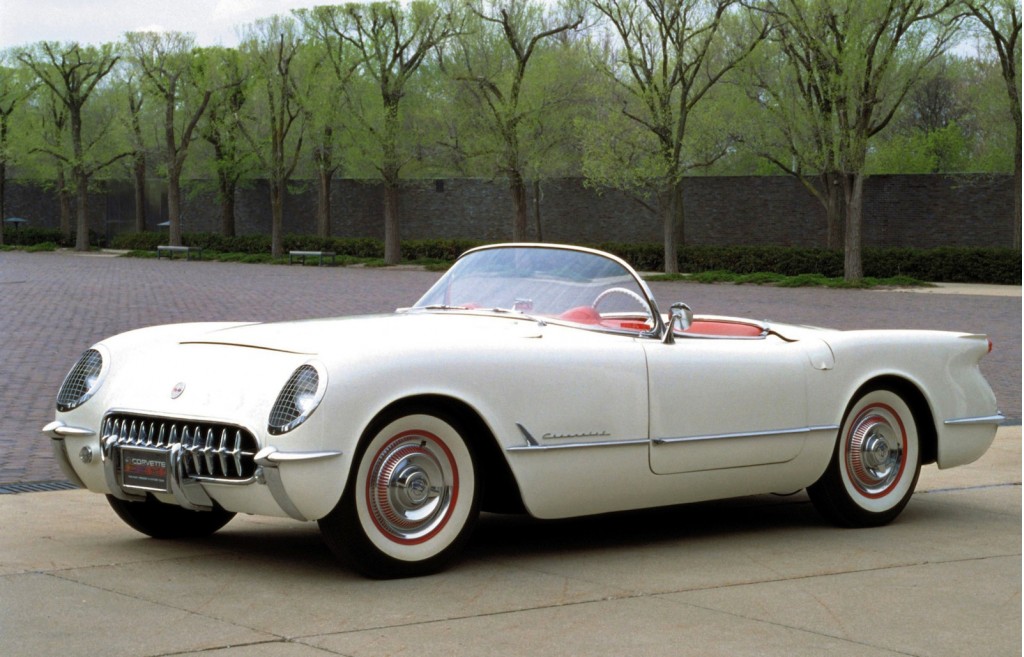
1963 Chevrolet Corvette
11. The split-window made the original Sting Ray unique, but it's not on the table for the new model. In fact, Chevy mocked up a car with a split window for the 2014 Stingray, but ultimately decided not to pursue it for the same reason the original only lasted one model year. The team found it to be distracting in the car, looking in the rear view mirror and seeing the bar there. They didn't want to do anything that detracted from the performance of the car.
As much as today's enthusiasts and collectors love the split-window coupe, the engineer known as the "Father of the Corvette," Zora Arkus-Duntov, nearly came to blows with GM Director of Styling Bill Mitchell over the vision-obstructing design cue. Arkus-Duntov hated the split window, and, perhaps surprisingly, so did most of the enthusiasts at the time. In fact, the desirability of the car for collectors now stems in part from their rarity--few were built, and many of those were converted to the later wrap-around window by their owners.
ALSO SEE: 1963 Split-Window Corvette Barn Find: 33 Years In Storage

2014 Chevrolet Corvette Stingray Premiere Edition
10. The Stingray (or Sting Ray) name has only been used twice before in the car's history, and the decision to use it again wasn't made lightly. The Corvette team had wanted to bring back the Stingray name for a long time, at least 10 years. They discussed a lot of options, like a track-focused car, kind of like the Grand Sport eventually became, but the word from on high at GM was that the name was too special to be used for anything that wasn't truly deserving. The decision to call the 2014 model the Stingray wasn't made until about 6 months before launch, when GM vice president of design Ed Welburn decided it was worthy.

2014 Chevrolet Corvette Stingray Live Shots
9. Top speed in reverse? A weird, wonderful 53 mph.

2014 Chevrolet Corvette Stingray
8. The 13.6-inch front brakes of the new Z51 Stingray are 13 percent larger than a 33-rpm LP record.
The Corvette didn't get standard four-wheel disc brakes until 1965, 12 years after the first Corvette rolled off the line.
7. The Corvette program's chief engineer is named Tadge Juechter. Does it take a German to make a car this good? We're not sure it's required, because Tadge isn't German, even though his name is. Juechter himself is all red-blooded car guy: he's been building cars since high school in the 1970s, when he built 55-mph go-karts from parts he found around his neighborhood.

2014 Chevrolet Corvette Stingray
6. The 2014 Stingray has a lifetime engine revolution counter, keeping track of every rev the LT1 V-8 has ever turned. Why? Because the 1953 Corvette did, too. Why did the 1953 have one? That's still a bit of a mystery.
ALSO READ: 2014 Chevrolet Corvette Stingray: First Drive
5. The new Corvette also has a built-in programmable acceleration timer, available in the programmable instrument cluster. Want to find out your real-world 0-60 mph times? No problem. How about 50-80 passing tests? Sure. Or 31-119 mph. Or 140-170 mph. Just set it and test it.

2014 Chevrolet Corvette Stingray first drive
4. The control software for the electronically actuated limited-slip differential in the Corvette was originally developed by Bosch--but the same guy (Chris Barber) was behind both the Bosch program and the Corvette's tune, giving the car a leg up in handling its 455-horsepower output.

2014 Chevrolet Corvette Stingray
3. The 2014 Corvette Stingray Z51 will likely be the quickest and fastest production car under $55,000 delivered when it goes on sale this fall, with a 0-60 mph time of 3.8 seconds and a top speed expected to be in excess of 180 mph. Chevy hasn't put the car through top speed testing at the Nardo Ring yet, but official numbers (plus Nordschleife lap times) should be forthcoming soon.
MORE CORVETTE: 2014 Chevrolet Corvette Stingray Priced From $51,995
Despite its current success, the Corvette almost died an early death. Sales were slow at first, due in part to the weak Blue Flame engine and a lack of creature comforts like roll-up side windows. But when Ford introduced the Thunderbird in 1955, GM kept the Corvette alive to save competitive face. As it turns out, it was a smart move, even if it was prideful--the Corvette is entering its 60th year, and the Thunderbird has been out of production since 1997, except for the underwhelming 2002-2005 run of a retro-modern version based largely on the mechanical underpinnings of the equally lackluster Lincoln LS.

1953 Chevrolet Corvette
2. The 2014 Stingray has two more cylinders and more than three times the horsepower of the original, Blue Flame in-line six-powered 1953 Corvette.

2014 Chevrolet Corvette Stingray LT1 engine
1. The Corvette's new 6.2-liter LT1 V-8 generates nearly one horsepower per pound. It weighs just 465 pounds, and generates up to 460 horsepower (with the optional performance exhaust).
LEARN MORE: 2014 Chevy Corvette Stingray LT1 V-8 Officially Rated At 460 HP



